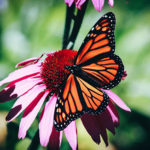“People only see what they are prepared to see.”
-Ralph Waldo Emerson-
Nature and outdoor photographers the world over have long recognized and worked hard to take advantage of the soft, seemingly magical light of early morning, regardless of their location or assignment. Natural light definitely is different in the first hour or two after daybreak. Although many wild creatures tend to be more active during the first and last hours of a day this is only a happy coincidences for photographers. Just as often, other birds and mammals will be up and moving all hours of the day, despite what the light may look like for photographer. The solution is learning to stretch perfect light so you can still come away with usable and often truly outstanding images throughout the whole day.
You’re not changing the sun’s brightness, rather only using it differently, and the techniques are not hard to learn. Sport and new photographers have to utilize these methods every day, and they are easily applied to outdoors and nature shooting. Here are five techniques you can begin using the next time your out in the field; you may have been practicing one or more of them already, and the longer you continue as a nature photographer, the more tricks you’ll use. These five are closely related, so you can combine them as you photograph.
1. Concentrate on color– Although bright light under a clear sky does seem to wash out colors; you can work around this by composing using contrasting colors. For example, place a bright red or yellow against a lighter brown or green. The key is having a brightly colored subject with a lighter background, rather than vice versa. Black or dark brown backgrounds can work, but if your brighter subject is small, a dark background may simply overpower it. At times, polarizing filters can help you, be careful and learn to use them correctly. Their primary function is to reduce glare, which frequently does result in richer color saturation. Some of today’s professional film does not always yield pleasing polarized results because their emulsions already offer excellent color saturation.
2. Shoot tight– This is one of the most critical techniques in making successful midday photos. Using a telephoto lenses isolate your subject so you can eliminate backgrounds brightness or contrast. Don’t Hesitate to choose a telephoto even when you’re already close to your subject; used in this manner, the result is almost three dimensional when you have strong side lighting and you use a large aperture to further reduce depth of field. This is when the zoom lenses in your bag really earn their keep because you can vary your composition without changing your physical position, plus fixed focal length telephoto also work well.
3. Change directions– Quite often, angled light or back-lit scenes are far more dramatic than those with front lighting. In fact, even experienced photographers usually express surprise at how much a photograph can be changed simply by repositioning you a few feet one way or the other.
4. Try fill lighting– Using a fill flash, even in midday, can and will add surprising result when shoot a subject within 10 feet. Flash photography has never been easier than rule governing their use has not changed: a fill flash is used to complement natural light outdoors, not to override it. In other words, don’t shoot into the sun in the belief the plash will eliminate a shadow-covered subject, because it won’t. Instead, use the flash to reduce contrast between bright areas and shadows and create more even overall light. Think small, too, as in subjects like birds or squirrels; a single hotshoe-mounted flash is not going to help much if you’re trying to light up a bison at noon in Yellowstone’s Lamar valley, but conversely, it can certainly help add detail if you’re photographing a small animal. At close distances, regular fill plash can be used successfully with telephoto lenses, too without having to resort to special accessories.

Photo captured by Mohammad Amziry bin Roslan (Click Image to See More From Mohammad Amziry bin Roslan)
5. Avoid harsh light contrasts– Don’t confuse contrasting light with contrasting colors, because even the best films made, can not handle the F-stop difference between bright light and dark shadow. With professional color transparency film, the exposure latitude you have even on uniformly lit subject is only about one-half stop and practically never more than one full stop. Thus, film doesn’t always capture color the way you see it, especially in high contrast conditions. In many instances, it’s easy to avoid harsh contrasts. Scenes that include land and sky, for example, often present this problem, but it might be solved if your composition includes a long, brushy tree limb as a framing device to eliminate much of the sky. Maybe the sky or the ground isn’t needed at all; reposition your horizon line or change your camera angle to emphasize another aspect of the scene. As you can see, all five techniques are closely related, and with experience you’ll be shooting more and well, so stretch the perfect and shoot all day long. See ya in the field.
About the Author:
David W. Cerino: a freelance photographer for over 22 years and still going. He is an award-winning photographer whose work has been published in many local newspapers and magazines.
Like This Article?
Don't Miss The Next One!
Join over 100,000 photographers of all experience levels who receive our free photography tips and articles to stay current:








Film? When was this article written? Not a bad piece but could use updating.
There are still professional photographers that shoot with film!